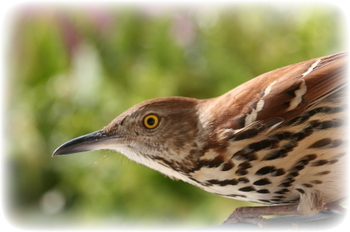Indicator 59: Breeding bird populations


Rationale: Birds inhabit a wide range of settings ranging from wetlands to forests to urban areas. Changing populations of breeding birds can indicate changes in the health of these diverse ecosystems.
About this indicator: Between 1980 and 2007, there were significant declines in 43 of the 143 species that breed in Minnesota and were counted in the survey. The populations of 13 species increased significantly. Changes for the remaining species were not significant.
| Total species | Significant Decline | Significant Increase | Nonsignificant change | |
| All breeding birds | 143 | 43 | 13 | 87 |
|---|---|---|---|---|
| Breeding area: | ||||
| Grassland | 13 | 4 | 0 | 9 |
| Wetland | 25 | 9 | 4 | 12 |
| Successional or scrub | 20 | 6 | 1 | 13 |
| Woodland | 49 | 6 | 4 | 39 |
| Urban | 11 | 6 | 1 | 4 |
| Migration type: | ||||
| Permanent resident | 18 | 4 | 4 | 10 |
| Neotropical migrant | 56 | 17 | 1 | 38 |
Things to think about: Since many bird species migrate, they are affected by the ecosystems of the places where they winter or the places they migrate through to reach their destinations. Species who reside year-round in Minnesota appear to be faring better than those which migrate to neotropical areas.
Technical notes: The Breeding Bird Survey, or BBS, is a large-scale roadside survey of North American birds. Experienced birders survey more than 3,500 routes, usually in June. The survey has been conducted since 1966. The data are processed by the United States Geological Survey. Variation in counts can reflect sampling error and technique as well as true changes in bird populations.
Sources:
- USGS, Breeding Bird Survey, http://www.mbr-pwrc.usgs.gov/bbs/
Local data:




